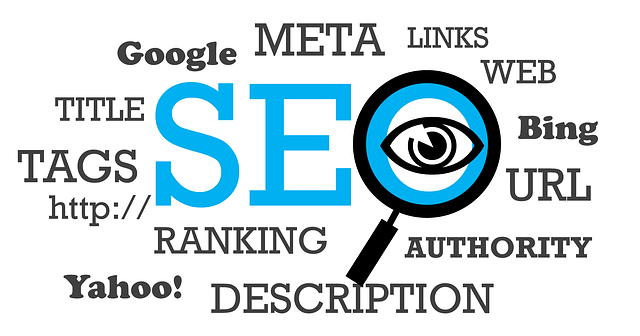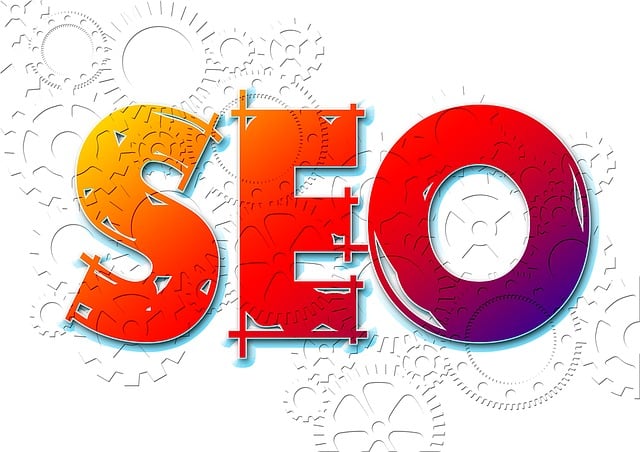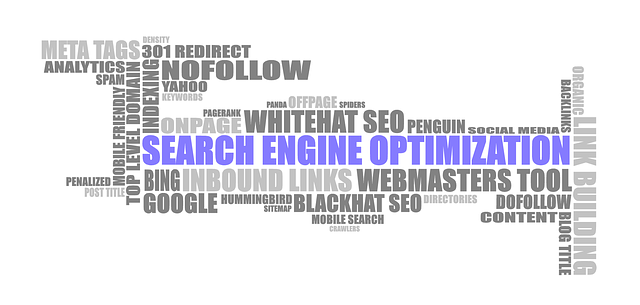On-Page SEO optimizes individual web pages to attract relevant traffic from search engines, enhancing rankings. This involves keyword research and natural integration into titles, headings, meta descriptions, and content. Other strategies include image optimization with alt tags, mobile-friendliness, high-quality content for user engagement, effective title tags, compelling meta descriptions, header tags for readability, internal linking for site architecture and user experience, and alt tags for image accessibility. Implementing these SEO tips can significantly improve rankings by appealing to search engines and target audiences alike.
Looking to elevate your website’s online visibility and SEO tips for ranking higher? On-page SEO is the cornerstone of your search engine strategy. This comprehensive guide explores essential techniques to optimize your site for better rankings. From crafting compelling title tags and meta descriptions, to enhancing content quality and leveraging internal linking, these SEO tips provide a solid foundation for success. Discover how to improve readability with header tags and boost discoverability through alt tags.
Understanding On-Page SEO: The Foundation of Search Rankings

On-Page SEO is a crucial aspect of search engine optimization, serving as the foundation for improving website rankings. It involves optimizing individual web pages to rank higher and gain more relevant traffic from search engines. By implementing effective on-page strategies, you can make your content more attractive to both users and search algorithms.
The key to successful on-Page SEO lies in understanding your target audience and tailoring your content accordingly. This includes conducting keyword research to identify the terms your audience uses when searching for information related to your niche. Incorporating these keywords naturally into your titles, headings, meta descriptions, and content body is essential. Additionally, optimizing images with alt tags, ensuring mobile-friendliness, and creating high-quality, engaging content will contribute to a better user experience, which search engines prioritize.
Optimizing Your Website's Title Tags for Maximum Impact

When crafting title tags, remember that they are a critical element in on-page SEO tips for ranking higher. Each page on your website should have a unique and descriptive title that includes relevant keywords naturally. The ideal title tag is concise, typically around 50-60 characters, and provides a clear indication of what the page is about. This not only helps search engines understand your content but also ensures users know what to expect when they click through from a search result.
Focusing on user experience is key. A well-optimized title tag should accurately reflect the content on the page while keeping it engaging and compelling. Incorporate keywords that are relevant to your target audience’s search queries, ensuring that the language used aligns with how users actually search. This strategy not only aids in SEO tips for ranking higher but also encourages clicks, reducing bounce rates and improving overall website performance.
Crafting Compelling and Keyword-Rich Meta Descriptions

Crafting compelling meta descriptions is a powerful on-page SEO tip to boost your website’s visibility and rankings. These concise summaries that appear in search engine results pages (SERPs) are crucial for attracting users and encouraging clicks. To craft effective meta descriptions, start by incorporating relevant keywords naturally throughout the text, ensuring they align with what a user might search for when clicking through. This strategy helps search engines understand your page’s content and context better, increasing its chances of ranking higher for specific queries.
When writing meta descriptions, keep them concise yet engaging. Aim for around 150–160 characters to capture attention while providing a clear benefit or answer to the user’s intent. Include a call-to-action (CTA) if possible, such as “Learn More” or “Shop Now,” to prompt users to take the desired action after clicking through. Remember, meta descriptions are often the first glimpse of your content that potential visitors get, so make sure they accurately represent and entice them to explore further, thereby enhancing your website’s overall SEO performance.
Utilizing Header Tags Effectively to Improve Readability

Utilizing header tags effectively is a powerful SEO Tip for Ranking Higher that goes beyond simple aesthetics. H1, H2, and H3 tags act as roadmaps for search engines, guiding them through your content hierarchy. Start with a clear and descriptive H1 that encapsulates your main topic, followed by H2s for subtopics and H3s for smaller sections. This structure not only improves SEO Tips for Ranking Higher but also enhances readability, making it easier for users to scan and understand your content.
By integrating keywords naturally within these headers, you reinforce the connection between your content and relevant search queries. Avoid excessive header usage, sticking to one H1 per page and using headings selectively to highlight key points. This balanced approach ensures your website remains user-friendly while leveraging SEO Tips for Ranking Higher to capture more organic traffic.
Enhancing Content Quality: Creating Engaging, Informative Material

When it comes to on-page SEO, enhancing content quality is paramount among the SEO tips for ranking higher. Creating content that is both engaging and informative ensures your site offers value to visitors, encouraging them to stay longer and explore more pages. This not only boosts user experience but also signals to search engines that your website is a reliable source of information, thereby improving your chances of securing better rankings.
Focus on producing high-quality material that addresses the needs and interests of your target audience. Incorporate relevant keywords naturally throughout your content, ensuring it reads smoothly and engagingly. Avoid stuffy language or excessive keyword stuffing, as this can detract from the overall user experience and potentially harm your SEO efforts.
Incorporating Internal Linking Strategies for Better User Experience

Internal linking is a powerful strategy that not only enhances your site’s architecture but also significantly contributes to better user experience and improved SEO tips for ranking higher. By linking relevant pages within your website, you create a network of information that allows visitors to explore related content effortlessly. This keeps users engaged and lowers bounce rates, which are both critical factors in determining search engine rankings.
When implementing internal linking strategies, focus on creating natural and contextually relevant links. Use anchor text that accurately describes the target page’s content, making it easier for search engines to understand your site’s structure and identify key topics. This intelligent linking not only streamlines navigation but also enables search algorithms to crawl and index your pages more efficiently, ultimately boosting your website’s visibility in search results.
Leveraging Alt Tags for Image Optimization and Discoverability

Alt tags, or alternative text, are a powerful tool in your on-page SEO arsenal. When search engine crawlers encounter images, they rely on alt tags to understand the content they depict. By using descriptive and relevant keywords within these tags, you’re essentially giving search engines a glimpse into what your image is about, enhancing both discoverability and accessibility.
This simple yet effective strategy allows you to convey the essence of an image while also connecting it to the broader topic of your webpage. For instance, if you have a blog post about “the best mountain hiking trails,” using alt tags like “hiking boots on rugged trail” or “panoramic view from summit” not only improves accessibility for visually impaired users but also helps search engines index and rank your page more accurately when images of hiking trails are searched.
